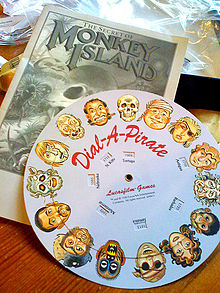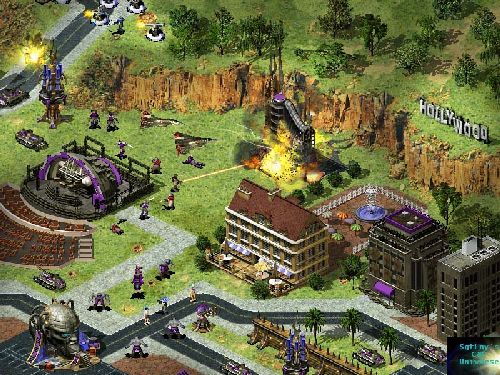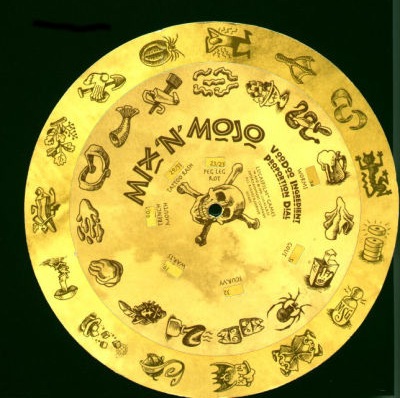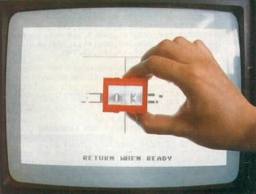The 5 Most Hilarious Forms of Software Copy Protection
 |
?Making stuff is hard. Being creative is a tough business, especially in an age when any stupid young (and probably fat) nerd can log onto Kazaa or whatever you crazy kids are using these days and experience for no money what many of us have slaved for long and hard to make. Videogames have had to contend with illegal distribution since the beginning. But unlike the makers of music and film, game designers have larger capabilities when it comes to circumventing would-be software pirates (not to be confused with would-be software ninjas, who would totally beat the software pirates in a fight). Nowadays most will just use a verifiable product code or something else just as effective, and just as boring.
Those of us who have been gaming for a long time can now speak somewhat nostalgically about the gymnastics we were expected to pull in order to get something running in Windows 3.1 or earlier. Give a new generation gamer a feelie and he’d probably throw it away or eat it or something, the schmuck. But we who have paid our video game dues know how it used to be, and thus I present some of the wackiest ways developers have tried to keep themselves safe. Next time some whippersnapper who never played anything older than Dynasty Warriors starts bitching about having to type in 12 whole characters, give their face a smack and throw some of these on their ass.
5) Sudden Nuclear Destruction, Command and Conquer: Red Alert 2
 |
?Of course the most fondly remembered pieces of copy protection are the more external elements that we’ll get to in a minute, but first let’s consider the subtler, slightly more sadistic kind, the “developer’s revenge” sub-trope. There are a quite a few infamous entries in this category: pirated copies of Earthbound let you get all the way to the final boss before freezing your game and erasing all your saves. The original PC version of Postal made your character shoot himself in the head at the start of the first level. But of all of these, the Command and Conquer: Red Alert 2 must have been the most cathartic to its creators. Rather than immediately let you know that you are destined for a world of punishment in return for stealing a copy of this game, the makers cruelly allow you to live the illusion that it was working normally for about 30 seconds. Then, hilarity/catastrophe ensues: your base explodes and all of your units die instantly. Apparently this can happen in as soon as ten seconds, actually, meaning that you might not even get through the entire tutorial before all your precious non-work goes up in smoke.
4) Full-Length Novellas/Journals With Only A Few Bits of Relevant Information
 |
?Creating a special item specifically to make sure you actually paid for the game was not uncommon and in itself isn’t too special. But sometimes developers went all out and included fully-developed short stories and booklets for inclusion with your game. There are few better examples than The Guidebook to the Land of the Green Isles, written by “Derek Kalavaegan” (actually Gabriel Knight creator Jane Jensen) and included with copies of Roberta Williams’ finest hour, King’s Quest 6. This Journal wasn’t just a Lane Mastodon comic or a simple map: this was practically a fully-written novella/reference book, and the only information really necessary for completing the game (the symbols needed to solve the Cliffs of Logic) were buried beneath pages upon tiny tiny pages of illustrations, reflections and “myths and legends”. As with many “feelies”, there was an inherent flaw in making this a vital part to the KQ6 experience in that it was small and flat and easily lost under the couch, which would of course make two thirds of the best King’s Quest completely unreachable. Similarly, the text adventure Mindwheel, developed by the poet Robert Pinsky of all people, came with a 93-page hardcover book also used for copy protection with a few previously published Pinsky poems slipped in for good measure. Essentially, this put game companies into the position of a disgruntled parent making sure you did your chores before you got to enjoy yourself. So basically you were paying to do homework. No wonder so many people just copied that floppy.
3) Pirate-Themed Code Wheels, The Secret of Monkey Island and LeChuck’s Revenge
 |
?Leave it to LucasArts to make something as tedious as copy protection actually fun. In a game about pirates, it only makes sense to deal with the problem in an appropriately pirate way, and the great thing about the dial-a-pirate and mix-n’-mojo wheels was that they performed their function without feeling like a chore or a legal obligation. In fact, these colorful little things look like something you’d find in a box of Monkey Island-themed cereal, which just sort of enhanced the whole thing. Coincidentally, I would totally eat the fuck out of Monkey Island Cereal, but I guess we’ll just have to settle with whatever mysteriously familiar cereal that was in the cabinets of the Sea Monkey. I do kind of wish Secret of Monkey Island had come with a tiny useful pirate key.
2) Dongles
 |
?These humorously named data accessories may have provided a wealth of material for the likes of elderly Ronnie Corbett but eventually proved to be less than ideal for preventing piracy: despite this, they are still around. The term “dongle” can actually apply to a variety of hardware items, but in this case refers generally to the little devices inserted into the computer to bypass certain encryptions. While it’s not a terrible idea to include a physical object for verification, the dongle provides lots of frustration to most software users and is definitely more tedious and annoying than a 12-character product code, even if it’s harder to produce. Apparently they aren’t exactly super effective either, as it isn’t difficult to remove the bit of code that requires software to perform a dongle check. I could make a cheap “remember to check your dongle” joke here, and I just did.
1)The Lenslok Prism
 |
?And so we come to the capstone of the ridiculous copy protection pyramid, a system so reviled it has fallen somewhere between a joke and a bad dream in the nerd public consciousness. Employed by a few different systems, most notably the Atari, Commodore 64 and Sinclair Spectrum, Lenslok was supposed to be ingenious but has since become something of a legend. A really embarrassing legend. It doesn’t sound too complicated: a prism is included with every game and used to read a scrambled code. Unfortunately this didn’t work, partially because you had to adjust the monitor a shit-ton to get it to the right calibration and partially because, interestingly enough, the prism was sometimes the wrong size. That’s right, the first rule of successful copy protection is to make sure the equipment is completely wrong for whatever game you’re using. Also, apparently the copy protection codes wouldn’t display for televisions of the wrong size, making the game inaccessible. And I thought the way the Mass Effect 2 font looked on standard TV’s was bad: at least I can play it.
